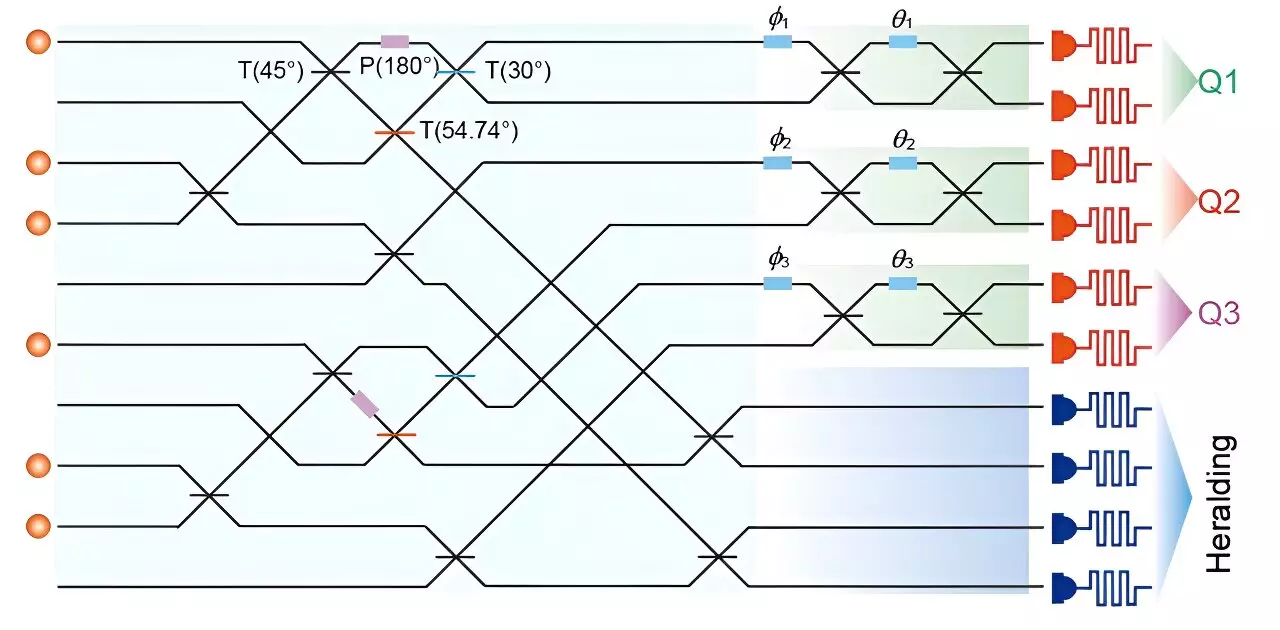Photonic quantum computers represent a revolutionary approach to computational tools by harnessing the power of quantum physics and utilizing photons as the basic units of information processing. While these computers have the potential to surpass conventional quantum computers in terms of speed and transmission capabilities over long distances, the inherent weak interactions between individual photons have posed significant challenges in achieving desired results.
One of the main obstacles faced by researchers in the field of photonic quantum computing is the weak interaction between single photons. This limitation has hindered the realization of deterministic two-qubit gates, which are essential for scalability in quantum computation. Previous studies have explored the concepts of fusion and percolation as scalable approaches to overcome the challenges posed by weak interactions in photonic systems.
A recent study published in Physical Review Letters by researchers at the University of Science and Technology of China demonstrated a significant advancement in the field of photonic quantum computing. The researchers successfully created a large cluster state using a three-photon entanglement, paving the way for quantum computation in photonic systems. This breakthrough showcases the potential of fusion and percolation strategies in realizing measurement-based quantum computing without the need for deterministic entangling gates.
The researchers utilized a strategy that involved fusing small resource states into large-scale cluster states suitable for quantum computation. By generating a heralded 3-GHZ state, the team was able to achieve success in creating entangled clusters in a heralded fashion, marking a significant milestone in the journey towards fault-tolerant photonic quantum computing. The experimental setup required six single photons for injection into a 10-mode passive interferometer, with an overall efficiency of 50%.
The researchers anticipate further advancements in the field of photonic quantum computing, with the potential to demonstrate a fusion gate surpassing the percolation threshold using eight single photons. By building upon the success of the heralded 3-GHZ state, multiple resource states can be amalgamated to create more extensive entangled states, bringing us closer to the realization of fault-tolerant photonic quantum computers. The recent progress in photonic quantum computing suggests that we are on the cusp of achieving significant breakthroughs in this cutting-edge technology.
Photonic quantum computing holds immense promise in the world of computational science, offering operational advantages at room temperature and minimal decoherence. By addressing the challenges posed by weak interactions between individual photons, researchers are making significant strides towards the development of large-scale optical quantum computers. The recent advancements in photonic quantum computing underscore the potential for groundbreaking innovations in the near future, as we continue to push the boundaries of quantum information processing.


Leave a Reply